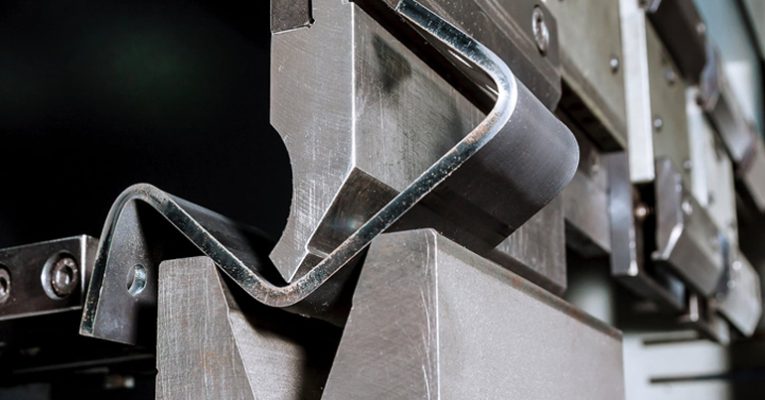
Folding
Bending is an essential process at Moben that allows sheets of metal to be shaped to create components with three-dimensional profiles. This process is widely used for the production of metal parts and products in various industries, from automotive to furniture manufacturing, from electronics to construction.
How does the folding work?
- Material preparation: The first step involves preparing the metal material to be bent. This may include cutting the metal sheets to the desired dimensions and preparing the edges, such as chamfering or milling to facilitate the bending process.
- Material fixation: The metal piece is firmly fixed in the press brake or CNC bending machine. This ensures that the material remains stable during the bending process.
- Selection of tools and dies: Appropriate bending tools and dies are selected based on project specifications and metal part dimensions. These tools determine the final shape of the part after bending.
- Machine setting: Bending parameters are set, including bending depth, bending angle and pressure exerted by the machine on the metal sheet.
- Performing the bending: Once the machine is set up correctly, the material is bent using the press brake. The piece is gradually bent according to the desired profile.
- Quality control: After the bending process, the part is checked to ensure that it meets design specifications, including dimensional accuracy and structural integrity.
The most frequently asked questions
Bending offers several advantages, including the ability to create complex and detailed shapes, precision in achieving specific angles, and reduced need for joints or welds.
Bending can be performed on a wide range of metal materials, including stainless steel, aluminum, carbon steel, copper, and brass.
The limitations of bending depend on the complexity of the part and the capacity of the available machines. Bending may not be suitable for very intricate shapes or extremely thick materials.
Bending costs depend on various factors, including the type of machinery used, the material, the thickness of the metal, the complexity of the part, and the amount of work required. For info request a free quote.
